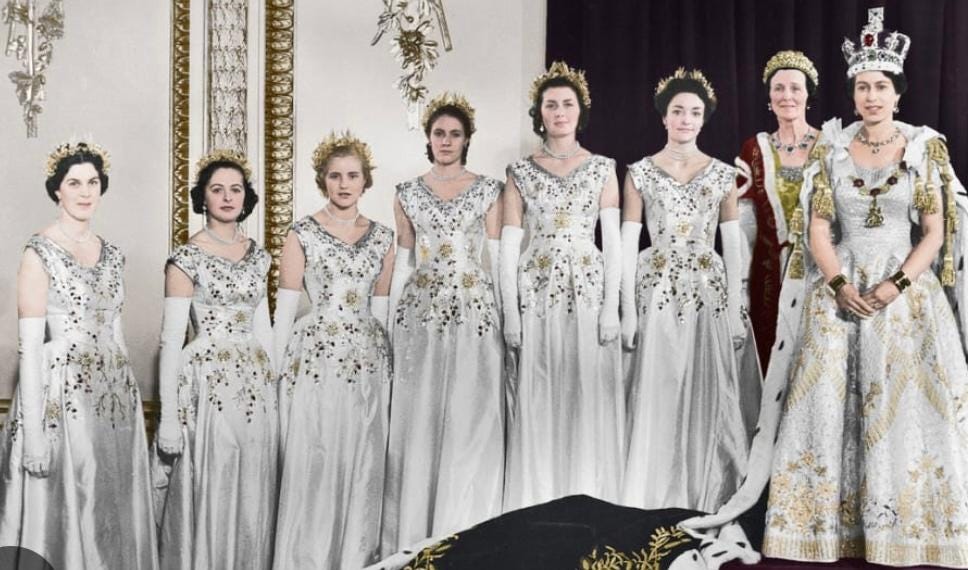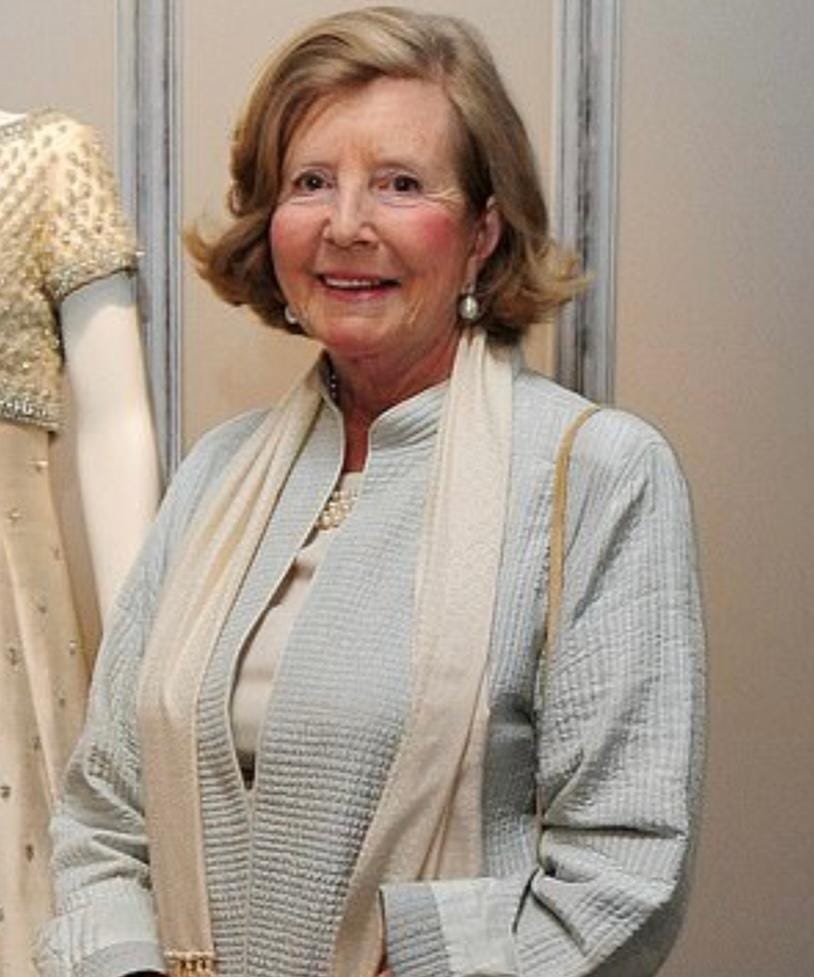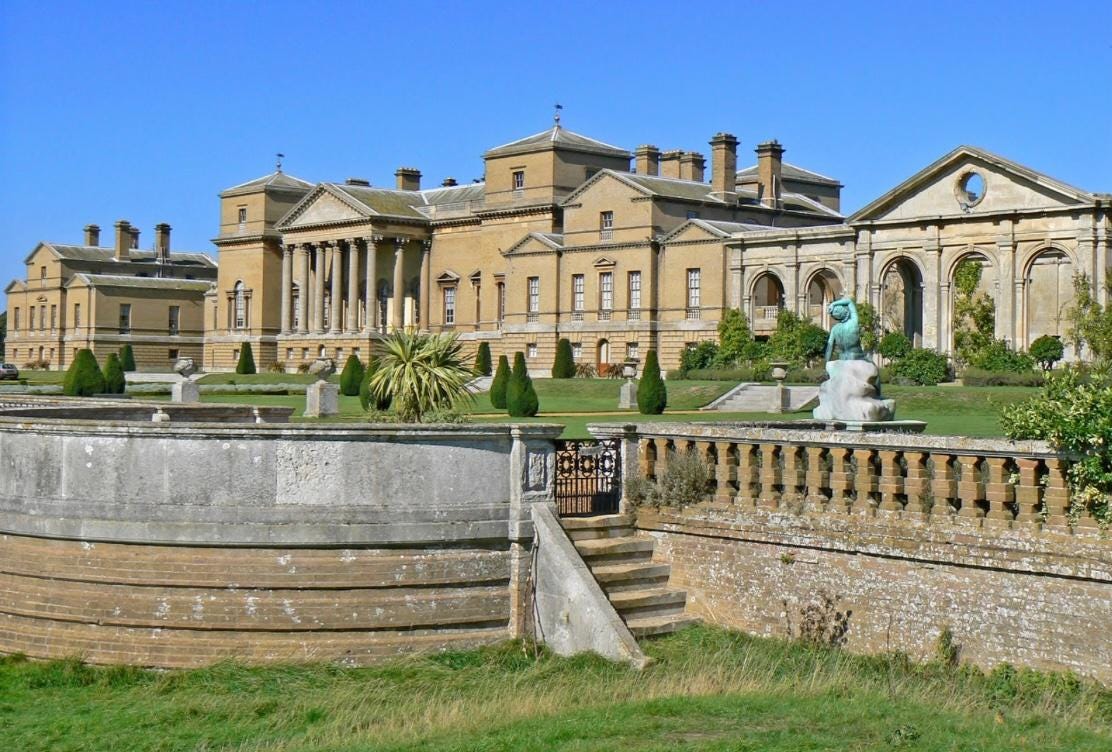Remembering the coronation of Queen Elizabeth II 70 years ago today
A reminiscence from one of the Queen's six indispensable and gorgeous Maids of Honour
It has been nearly a month since King Charles III and Queen Camilla were crowned in Westminster Abbey—the first coronation of a king and queen since Charles’s grandparents, King George VI and Queen Elizabeth, carried out the ancient ritual of Church and State 86 years ago.
But today we remember the King’s late mother, whose coronation on June 2, 1953 dazzled a world still feeling the pinch of wartime austerity. Not only was the 27-year-old queen beautiful and poised, but she was also attended by six equally radiant women aged 19 to 23, all unmarried daughters of dukes, earls, and marquesses—the highest-ranking hereditary peers. They in turn were supervised by the most senior of the Queen’s Ladies in Waiting, the Dowager Duchess of Devonshire, who served as the Mistress of the Robes.

Like the Queen, who died at age 96, they all lived well into their late eighties and nineties. The Duchess of Devonshire died at 93 in 1988, Lady Moyra Hamilton was 90 on her death in 2020, and Lady Rosemary Spencer-Churchill died at 88 on the day before the Queen’s State Funeral last September.
Of the four still living, only 90-year-old Anne Tennant, Baroness Glenconner, witnessed the coronation for a second time. She sat in the North Transept in a choice location next to John Kerry, the United States Special Presidential Envoy for Climate—an issue that has been one Charles III’s longstanding causes. She is as lively today as she was when I interviewed her in 2008 about her experience on that rainy late spring day when the Queen broke precedent and allowed a global audience to witness the pageantry on live television. I included some of her impressions in my biography, Elizabeth The Queen: The Life of a Modern Monarch, but it seems fitting to offer my readers something extra today.
At the time of the coronation, she was Lady Anne Coke, the 20-year-old daughter of the 5th Earl of Leicester. Three years later she married Colin Tennant, who became the 3rd Baron Glenconner. She has led an extraordinary life vividly chronicled in two best-selling memoirs that she wrote in her eighties. She was an intimate friend of the Queen’s younger sister, Princess Margaret, serving as her lady-in-waiting from 1971 until the princess’s death in 2002. Despite numerous tragedies—more than five decades of physical and emotional abuse from her husband, along with the deaths of two of her five children—she has maintained an impressively positive and stalwart approach to life.
She and I met at her flat in London’s Holland Park neighborhood. She was 76 at the time, casual in a sweater and trousers, her dark blonde hair cut straight below the nape of her neck. She was pretty and youthful, energetic and matter-of-fact about the momentous occasion in which she had participated.
Anne had grown up at the majestic Holkham Hall, a short distance from the royal family’s Sandringham estate in Norfolk, so she had known the late queen her entire life. (During the reign of King George V, Queen Mary liked to bring house guests to Holkham to go “all over the house” and marvel at its “treasures”.) In addition to being single and aristocratic, the maids were chosen for their self-possession and their hourglass figures. “We had to be the right shape,” Anne recalled. “One girl’s mother was furious that she was not chosen, but she walked as if she had a cactus bush between her legs.”
Keep reading with a 7-day free trial
Subscribe to ROYALS EXTRA BY SALLY BEDELL SMITH to keep reading this post and get 7 days of free access to the full post archives.





